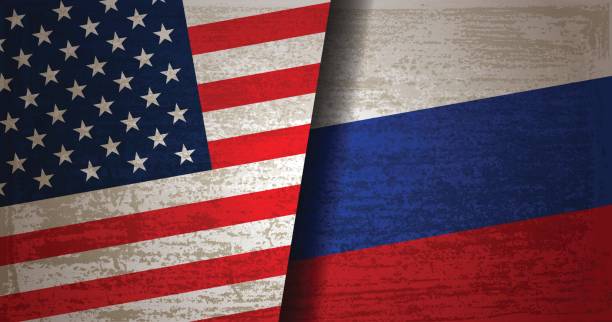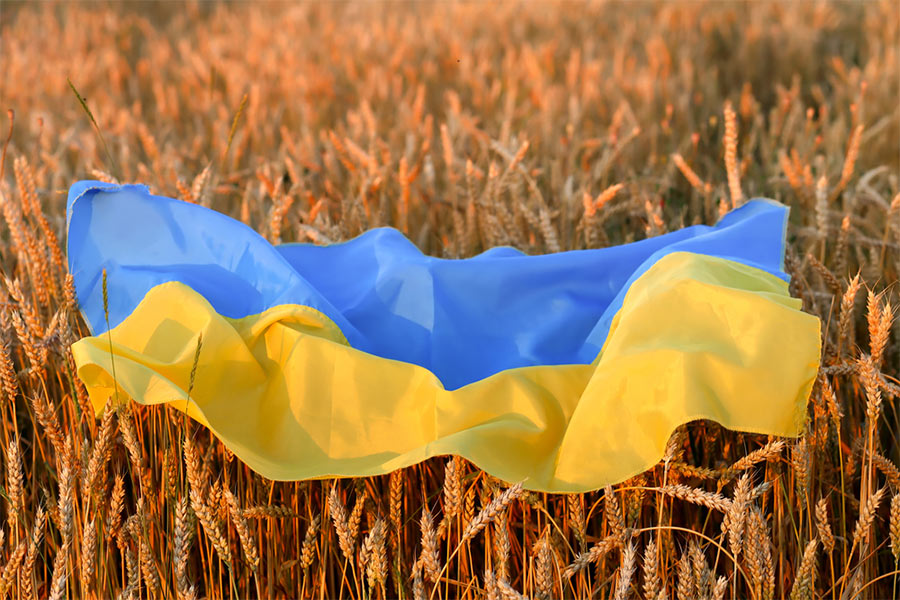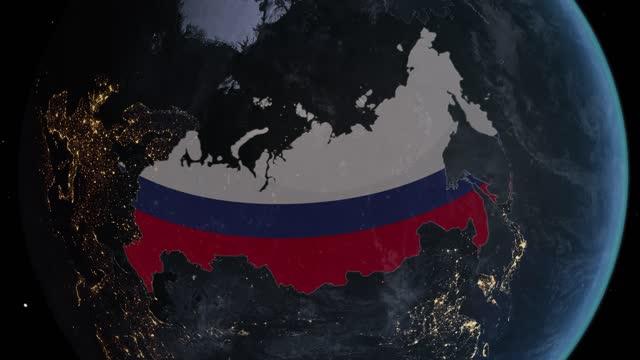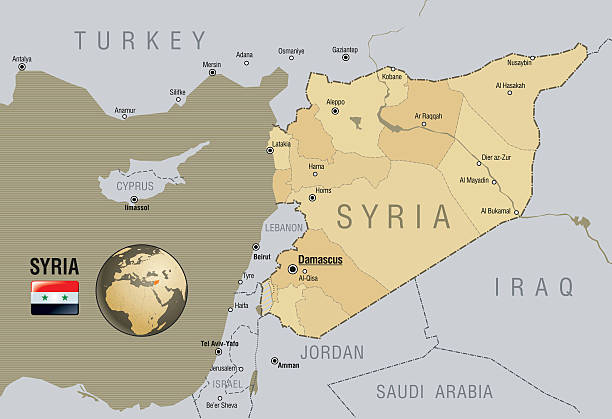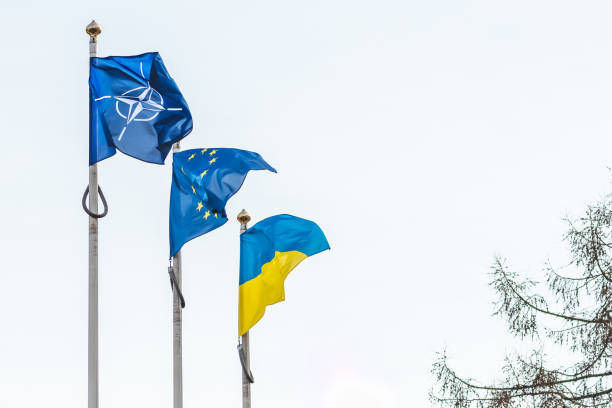The following are a few takeaways from the American press, in chronological order, about battlefront developments in Ukraine.
On April 5, 2022, Chairman of the Joint Chiefs of Staff General Mark Milley and Defense Secretary Lloyd Austin appeared before the House Armed Services Committee for the first time after Russia invaded Ukraine.
“I do think this is a very protracted conflict, and I think it’s measured in years. I don’t know about decade, but at least years for sure,” General Milley told the Committee. “This is a very extended conflict that Russia has initiated and I think that NATO, the United States, Ukraine and all of the allies and partners supporting Ukraine will be involved in this for quite some time,” Milley said.
Later in the month, Defense Secretary Lloyd Austin was asked how he defined “America’s goals for success” in Ukraine. He first said Washington wants to see “Ukraine remain a sovereign country, a democratic country, able to protect its sovereign territory.” Then, he said, the United States hopes Russia will be “weakened” by the war. “It has already lost a lot of military capability and a lot of its troops, quite frankly, and we want to see them not have the capability to very quickly reproduce that capability,” he added.
On June 8, 2022, a New York Times article said, “… American intelligence agencies have less information than they would like about Ukraine’s operations and possess a far better picture of Russia’s military, its planned operations and its successes and failures, according to current and former officials.”
On November 16, 2022, General Milley said chances were low that Russia or Ukraine would fully conquer all of Ukraine militarily. The following week, General Milley again suggested that the time was ripe for negotiations. In a news conference, he said that despite Ukraine’s heroic success in driving the Russians from Kharkiv and Kherson, it would be “very difficult” to evict Russia’s army from the entire country by force. There might be an opening for political solutions, however: “You want to negotiate from a position of strength,” Milley said, and “Russia right now is on its back.”
The Biden administration promptly distanced itself from his remarks.
In April 2023, leaked US intelligence documents reflecting a bleak assessment warned of significant “force generation and sustainment shortfalls,” and the likelihood that Ukraine’s spring offensive operation will result in only “modest territorial gains.” The Washington Post reported that these documents marked a departure from the Biden administration’s public statements about the vitality of Ukraine’s military and were likely to embolden critics who feel the US and NATO should do more to push for a negotiated settlement to the conflict.
On June 15, Secretary Austin told the Ukraine Defense Contact Group, “Throughout the Kremlin’s vicious war of choice, the Ukrainian forces have shown outstanding bravery and skill. And Ukraine’s fight is a marathon, and not a sprint. So we will continue to provide Ukraine with the urgent capabilities that it needs to meet this moment, as well as what it needs to keep itself secure for the long term from Russian aggression. And make no mistake: we will stand with Ukraine for the long haul.”
On July 1, Ukraine’s counter-offensive against Russia will be difficult and “very bloody”, General Milley said. He added that he was unsurprised that progress had been slower than predicted – but added that Ukraine was “advancing steadily”. “It goes a little slow, but that is part of the nature of war,” he said.
Last week, The New York Times reported that according to American and other Western officials Ukraine’s grinding counteroffensive is struggling to break through entrenched Russian defenses largely because it has too many troops, including some of its best combat units, in the wrong places.
And “… the US intelligence community assesses that Ukraine’s counteroffensive will fail to reach the key southeastern city of Melitopol, people familiar with the classified forecast told The Washington Post, a finding that, should it prove correct, would mean Kyiv won’t fulfill its principal objective of severing Russia’s land bridge to Crimea in this year’s push.”
Finally, the Netherlands and Denmark announced their decision to provide Ukraine with F-16 fighter jets in an agreement hailed by President Zelensky as “historic.” Russia’s TASS news agency reported also what was generally avoided by others about the agreement:
“Ukraine will be authorized to use F-16 planes to be handed over by Denmark, but only over its own territory, Danish Defense Minister Jakob Ellemann-Jensen said.
“We donate weapons under the condition that they are used to drive the enemy out of the territory of Ukraine. And no further than that,” Copenhagen’s defense chief said, according to the Ritzau news agency. “Those are the conditions, whether it’s tanks, fighter planes or something else. It is a signal that Ukraine will surely get.”
“Danish Conservative Party Chairman Soeren Pape Poulsen also underscored that the planes must not operate beyond Ukraine.”[i]
In recent weeks, it was also reported that according to unnamed US officials, Russia’s military casualties in Ukraine are approaching 300,000. The number includes as many as 120,000 deaths and 170,000 to 180,000 injured. And Ukrainian casualties are close to 70,000 killed and 100,000 to 120,000 wounded. Moreover, it appears that in a year and a half of conflict, land mines — along with unexploded bombs, artillery shells, and other deadly byproducts of war — have contaminated a swath of Ukraine roughly the size of Florida or Uruguay. It has become the world’s most mined country.
“I would like to emphasize here that reports related to the transfer and use of cluster munitions are very concerning,” said Izumi Nakamitsu, the UN high representative for disarmament affairs, at a Security Council meeting on August 17. “The Spokesperson of the Secretary-General has called for these types of munitions to be consigned to history and not to be used.”[ii]
Since January 2021, the United States has invested more than $44 billion in security assistance to Ukraine.[iii]
In brief, Russia and President Putin are both weakened, but it is unlikely that Ukraine’s spring offensive would prove a success. Unnamed “American officials” are said to be dissatisfied with Ukraine’s military tactics. But does the criticism attributed to “US officials” represent genuine concerns or an endeavor to underline that the Ukrainian military is independent of “foreign interference” in its conduct of the war? Or is it, despite the massive supply of arms, intelligence, and military advice, an effort to disassociate the US defense establishment from a less than “victorious” end to the war? Or, again, are these attempts to mislead the Russian side? Hard to tell. Although there is a finishing line in every marathon, it appears that the war of attrition would continue for some time with the finishing line constantly moving further away despite fatigue among competitors. And so would the calls for a new grain deal and a ceasefire.
Despite the foregoing, one may still hope for a ceasefire in the not-too-distant future, for a reason.
Many wars were followed by a discussion about whether they could have been ended earlier with fewer casualties and less devastation. For example, the war in Korea, the first major conflict of the Cold War, started with North Korean troops crossing the 38th parallel on June 25, 1950. Two days later the UN Security Council adopted a resolution, authorizing UN member states to provide military assistance to South Korea. At the time the USSR was not attending the Security Council meetings because Taiwan was still representing China there. In other words, there was no Russian veto. Three days later Seoul fell to North Korean troops. In mid-September, US forces landed at Inchon, close to Seoul. On October 1, South Korea’s forces crossed the 38th parallel. US troops followed them. On October 9, Pyongyang was in their hands. China entered the war. In January 1951 Seoul was once again in the hands of communist forces. In mid-March, UN forces again retook Seoul. In the summer of 1951 armistice talks were launched. Nonetheless, the war continued for another two years until Stalin’s death on March 5, 1953. Nearly two years after the launching of these talks, on July 27, 1953, an armistice was signed creating a demilitarized zone that roughly followed the prewar border along the 38th parallel. Korea was devastated. Three and a half million Koreans had died or were wounded not only in the fighting but also in domestic atrocities. At an incredibly high cost, Seoul and Pyongyang were back where the war started. An earlier armistice could have resulted in a less tragic picture.
Last week, in a major international development, Argentina, Egypt, Ethiopia, Iran, Saudi Arabia, and the United Arab Emirates were invited to become full members of BRICS. Their membership will come into effect from January 1, 2024, the summit’s host President Ramaphosa declared.
At the summit, the UN Secretary-General Guterres said, “We are moving towards a multipolar world, and that is a positive thing… Today’s global governance structures reflect yesterday’s world… In the absence of such reform –– fragmentation is inevitable… We must urgently restore trust and reinvigorate multilateralism for the 21st century.” [iv]
In the meantime, as climate change continued to take a heavy toll worldwide, the top news in Russia and the West is Prigozhin’s suspicious death. In the US, the big news is former president Trump’s surrender at the notorious Atlanta Jail in Georgia Election Interference Case and President Biden’s visit to Maui devastated by fires where, using a language reminiscent of his statements about Ukraine, he said, “For as long as it takes, we’re going to be with you…” Sad times for the world, for the West, and for democracy.
As for Türkiye, it seems that Presidents Putin and Erdoğan are to meet soon, following “intensive preparation” according to the Kremlin.[v]
This Wednesday, August 30, 2023, will mark the 101st anniversary of the Battle of Dumlupınar which brought Türkiye’s War of Independence to a successful conclusion under Atatürk’s leadership. Against all odds at the end of the First World War, his military genius, courage, patriotism, and the way he inspired the Turkish soldiers freed the country from foreign occupation. But more was to come. A year later, his enlightened world vision and his statesmanship led to the declaration of the secular Turkish Republic. Whatever we are proud of today as a nation we owe it all to him. He will remain the father of the nation to infinity.
————————————————————————————————————-
[i] https://tass.com/world/1662927
[ii] https://www.passblue.com/2023/08/23/un-disarmament-expert-calls-use-of-banned-cluster-munitions-in-russian-ukrainian-war-very-concerning/?utm_source=PassBlue+List&utm_campaign=7c090fdbbf-RSS_PassBlue&utm_medium=email&utm_term=0_4795f55662-7c090fdbbf-55100883
[iii] https://www.state.gov/u-s-security-cooperation-with-ukraine/
[iv] https://www.un.org/sg/en/content/sg/statement/2023-08-24/secretary-generals-remarks-the-brics-summit
